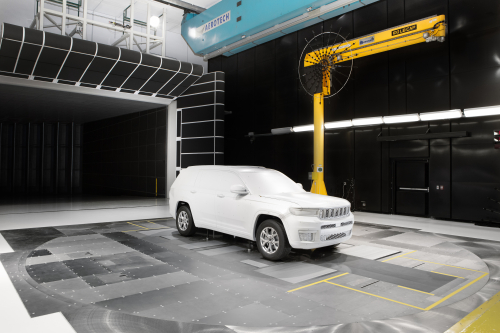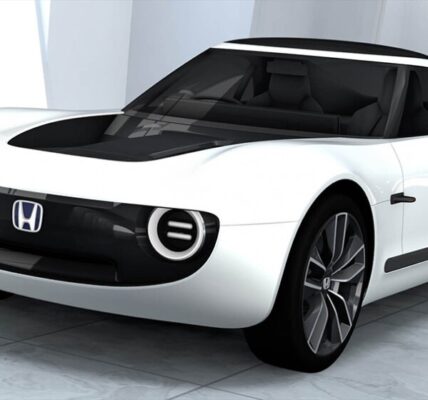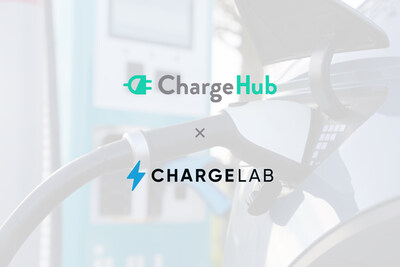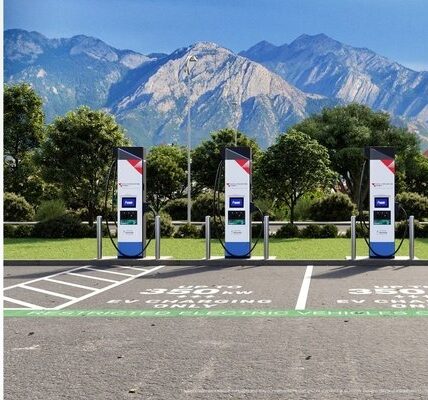Stellantis has unveiled its Moving Ground Plane (MGP) technology – a $29.5 million investment – at the company’s research and technical center in Auburn Hills, Michigan. The upgraded wind tunnel will be able to measure and reduce airflow resistance from wheels and tires, which can account for up to 10% of total real-world aerodynamic drag, according to Stellantis.
Optimizing aerodynamic efficiency is crucial in the effort to extend the driving range of electrified vehicles on a single charge. This enhancement directly contributes to improved efficiency, benefiting customers with longer EV ranges and potentially reducing battery sizes, which in turn could lead to cost and weight savings, Stellantis said.
“Range is a core consideration for customers who are transitioning to cleaner mobility through battery power,” said Mark Champine, senior vice president and head of North America engineering technical centers. “That’s what makes this investment so critical. By reducing drag, we improve electric-vehicle range and, ultimately, the overall customer driving experience.”
According to Stellantis, the upgrade to the company’s innovative aero-acoustic wind tunnel simulates real-world travel while allowing test vehicles to remain static. Belts suspended by cushions of air enable wheel movement at all four corners, while a fifth belt runs longitudinally beneath the vehicle, mimicking on-road travel conditions.
This realistic simulation allows for more precise testing and aerodynamic improvements.
“For EVs, a range increase enabled by improved aerodynamics can lead to potential battery-size reductions,” said Champine. “This has positive implications from more efficient packaging-to-weight savings that, in the end, will enhance the customer experience.”
The upgraded wind tunnel also provides a valuable complement to virtual development tools.
“This apparatus is a great addition to virtual tools, which may not account for factors such as tire deformation that can compromise aerodynamics,” said Champine. “With this technology we can replicate such conditions and capture real-time data to explore solutions.”
The new facility also adds vital automation capability. Changes to wheelbase and track testing, which can take as much as two hours in conventional wind tunnels, can now be done in minutes.
The combined outcome of real-time data collection and increased automation: increased speed to market, according to Stellantis.








